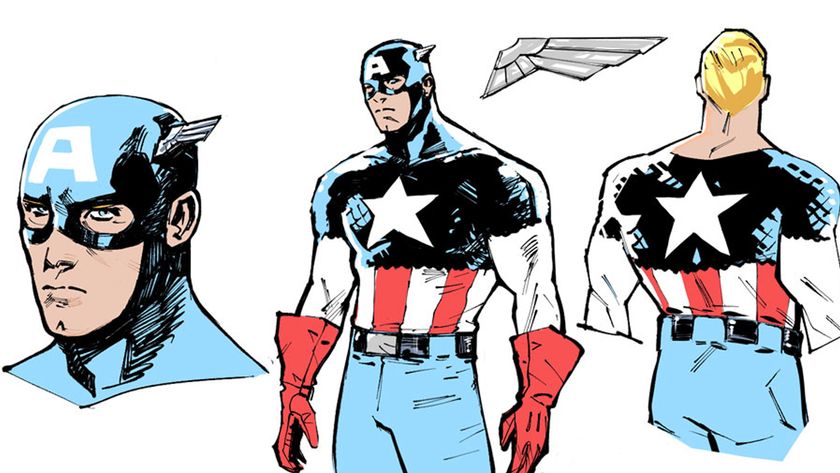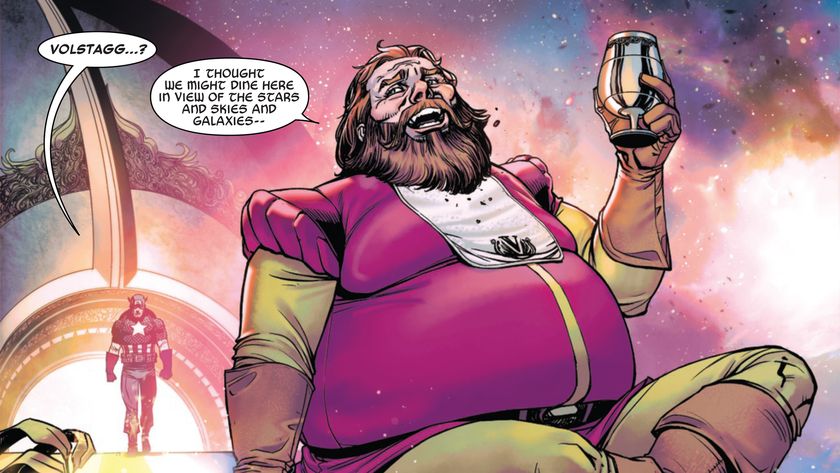The extensive history of Marvel superheroes fighting each other
Marvel vs. Marvel - AXE: Judgment Day is the latest escalation of the publisher's signature story device
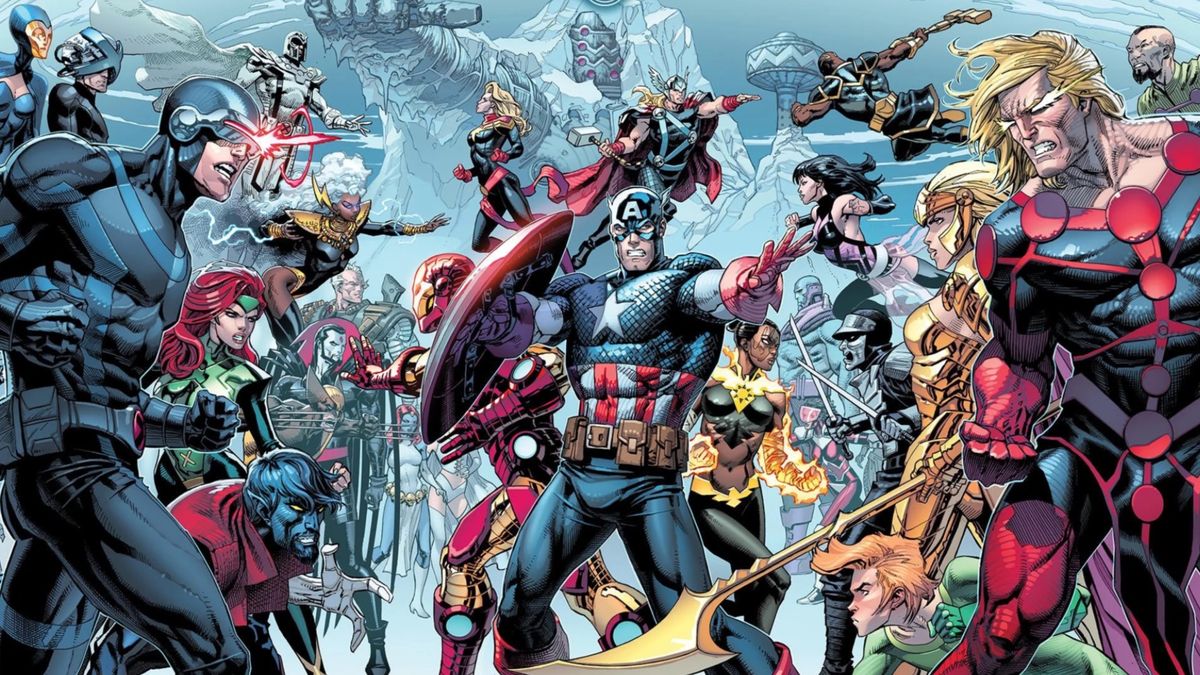
This summer, Marvel Comics is taking three of its top teams - the Avengers, the X-Men, and the Eternals - and mashing them all up into a threeway conflict for the event AXE: Judgment Day ('AXE' for the initials of the three aforementioned teams, of course). The motivations for the conflict come down to some contentious beliefs growing among the Eternals about the origin of mutants, with the Eternals now believing that mutantkind are offshoots of the Deviants, the ancient enemies of the Eternals.
Whether that winds up being true or not (and whether the truth will even matter to the conflict), one thing that's undeniable is that AXE: Judgment Day's hero vs. hero vs. hero showdown is just the latest escalation in Marvel's long standing tradition of having its superheroes square off as rivals or even out-and-out enemies.
(That tradition and its escalation also includes Marvel's recent penchant for turning heroes into villains - but that's a different story).
Though aspects of Judgment Day's plot come from comics that are as modern and up to date as it gets, the larger theme of the event - teams of Marvel heroes going head-to-head as each others' antagonists - is one of the staples of the Marvel Universe going all the way back to the Golden Age of the '30s and '40s, when Marvel was still called Timely Comics.
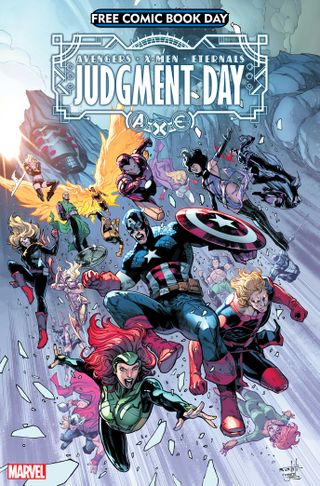
In fact, the first-ever crossover event between Marvel characters, which took place in the Timely days, was a clash between Namor the Sub-Mariner and the original Human Torch, two of the stars of Timely's flagship title Marvel Mystery Comics (originally titled simply Marvel Comics).
Judgment Day, the latest example, even takes its cues from recent events such as Avengers vs. X-Men and Inhumans vs. X-Men (the X-Men get beat on by other Marvel heroes a lot), and the Eternals have gotten into it with the Avengers before themselves. The publisher is even celebrating the 60th anniversaries of the debuts of the Hulk and Thor by having them fight in a highly anticipated grudge match.
Clearly, there's a pattern here, and it's not a new one, despite how contemporary the concept of superheroes fighting may seem. The idea of heroes fighting one another is so ubiquitous and on-brand for Marvel, it's even included in rival DC's description of Earth-8, its Multiverse Earth that's features analogs of Marvel heroes and villains.
Comic deals, prizes and latest news
Get the best comic news, insights, opinions, analysis and more!
So why is the idea of heroes getting embroiled in conflicts so baked into Marvel Comics as a publisher, and the Marvel Universe as a narrative?
It may seem somewhat controversial to say, but the fact is, the reason behind Marvel's continued revisiting of the idea of hero vs. hero conflicts has been a foundational building block of the philosophy behind the Marvel Universe since its inception - and even before.
Hero vs. Hero - a 'Timely' invention
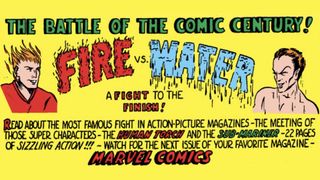
As we said, Marvel heroes fighting each other goes all the way back to the Golden Age, when Marvel Comics was still known as Timely Comics. The very first Marvel Comics crossover (and yes, we're counting it that way since it took place in the pages of Marvel Mystery Comics) was a showdown between the original android Human Torch, and Namor the Sub-Mariner, the renegade prince of Atlantis.
It makes total sense - fire and water certainly don't mix, and even in his earliest adventures, Namor was an anti-hero at best, often raging against the surface world as much as protecting it (he's still like that, as we'll quickly learn). But the 'crossover' wasn't exactly what we'd expect from a modern event story.
For one thing, it took place over just two issues of Marvel Mystery Comics (Marvel Mystery Comics #8 and #9), with Human Torch and Namor's usual features each dedicated to the tale of their fight. Still, the concepts that would later come to define the idea of a superhero crossover are still there, including the idea of multiple chapters showing the events from the perspective of each hero in a longer-than-usual story.
Defining the Marvel vs. Marvel formula
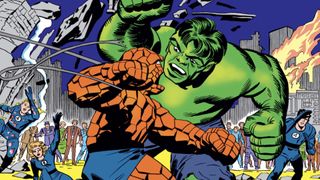
When Stan Lee and Jack Kirby, both veteran Timely Comics creators, launched the Marvel Universe around 20 years later with 1961's Fantastic Four #1, they borrowed some philosophical and narrative cues from the Timely years.
First and foremost, they baked the idea of superheroes in conflict right into their first Marvel building block, giving the Fantastic Four feet of clay (no pun on the Thing's rocky form intended) and personal foibles that often led to disagreements and disputes between the familial members of the Fantastic Four.
They also quickly started bringing in actual story elements from the Timely era, not just by rebooting the Human Torch as Johnny Storm of the Fantastic Four, but by almost immediately bringing in Namor as a foe of the team and a romantic rival for Reed Richards, forming a light love triangle with Sue Storm, then Reed's often tenuous girlfriend.
Namor was just the tip of the iceberg (pun definitely intended here, given they also brought back Timely's Captain America, frozen in a block of ice a few years later in Avengers), and even as he became a recurring enemy for the Fantastic Four, he also began headlining his own heroic adventures.
Namor - the original anti-hero
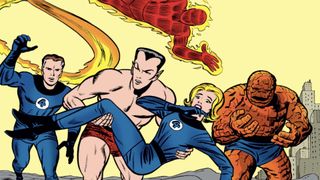
Namor has stayed the figurehead for Marvel's hero vs. hero ethos over the years, bringing his fellow anti-hero the Hulk into the fray against the Fantastic Four, and teaming up with Doctor Doom off-and-on to this day.
Namor and Hulk essentially embody the gray area (there's another pun on Hulk's skin, we're not even sure if it was intentional this time) often occupied by Marvel's greatest heroes and taking the idea of superhero disagreement all the way to the extremes of all-out-war, with Namor's kingdom of Atlantis and Black Panther's home of Wakanda developing a particularly destructive rivalry in recent years, and Hulk declaring, well, World War Hulk on the rest of the Marvel Universe after they attempted to exile him to space in the story Planet Hulk.
Namor and T'Challa will have to reckon with their legacy together when Namor rejoins the Avengers later in February - hot on the heels of another stint as the team's enemy. And as we mentioned previously, the Hulk is so synonymous with fighting other Marvel heroes that he's celebrating his 60th birthday by fighting Thor.
Speaking of all-out-war between superheroes…
Marvel's civil (and not so civil) wars
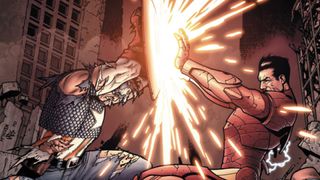
In a modern sense, Marvel's focus on heroes fighting heroes began with 2006's Civil War, which literally split the heroes of the Marvel Universe down the middle in a fight over legislation that required superheroes to register their secret identities to the US government and submit to their scrutiny - with Iron Man and Captain America as the figureheads of the pro-legislation and anti-legislation sides, respectively.
Civil War remains one of Marvel's top-selling stories ever, showing the fascination with the idea of heroes beating each other up even among readers, and later viewers when the story was adapted to the Marvel Cinematic Universe as Captain America: Civil War.
But the concept has never really lain dormant at Marvel, with heroes often fighting each other in special issues that wind up with the combatants setting aside their differences to take on a greater threat. Even Marvel's prototype for its modern event crossover, 1980's Contest of Champions, borrowed the formula for an actual tournament of heroes - something recently repeated in Avengers' 'Enter the Phoenix' arc, in which the Phoenix Force is summoned to Earth by who else but Namor, hosting a hero-vs.-hero tournament to determine its new host.
(Echo was the winner, by the way).
Avengers vs. X-Men rises from the ashes
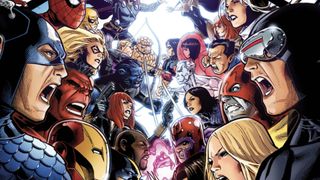
The Phoenix Force was also the driving factor the last time the Avengers and X-Men fought, back in 2012's Avengers Vs. X-Men event, in which both teams warred over what would become of the Phoenix Force as it returned to Earth. But the Avengers and X-Men alone have a history of Rocky/Drago level grudge matches (and an almost equal record of wins and losses between them) dating back to the early Marvel days of the '60s.
And, as all things at Marvel seem to do, things have now come full circle back to the Avengers and X-Men - ten years after the Avengers Vs. X-Men event, no less - with the two teams joining in on AXE: Judgment Day against the Eternals, who may themselves become the bigger threat the Avengers and X-Men must combine forces against to win the day, as the Phoenix Force was in the original event.
Or, perhaps even more likely, there's a bigger villain waiting in the wings of Judgment Day, waiting to offer answers and motivation for all three groups to set aside their differences and team up in the mighty Marvel fashion.
At the same time, in Hulk Vs. Thor: Banner of War (kicking off in April 27's Hulk Vs. Thor: Banner of War Alpha #1), the two top candidates for 'strongest Avenger' will put all pretense aside and face off in some kind of arena - again, likely through the machinations of a larger villain for both heroes, possibly even the new, villainous Hulk incarnation known as Titan.
Place your bets
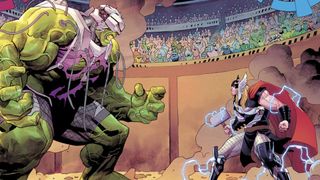
In other words, in both Judgment Day and Banner of War, there will likely be a reason to make things whole again once the story is done. And, even if it takes a while to get back to the status quo, having a villain to come together and fight gives Marvel heroes a way to embrace the so-called 'illusion of change' that constitutes one of Marvel Comics' other founding principles.
And that brings us back to the original question. Why does Marvel Comics keep going to the well with hero vs. hero stories time and again throughout their history, both as a publisher and as storytellers?
There's the simple answer of sales, which is punctuated by the ongoing popularity of Civil War as a collection. But there's more to it than that - and in some ways, the driving forces that seem to be the underpinnings of Marvel's trend are as intrinsic in fandom in general as the fights are to Marvel in specific.
After all, who hasn't sat around their local comic shop debating whether Thor or Hulk is truly stronger? Judging by the times Stan Lee and Jack Kirby had Hulk take on characters like the Fantastic Four's Thing and the entire rest of the founding Avengers back in the '60s, even Marvel's forefathers had those thoughts in their minds when crafting stories.
And that's saying nothing of the later trend of pitting whole companies against each other (not just in terms of the Marvel/DC publishing rivalry) but with the mid-'90s dream match-up title Marvel Vs. DC and its spiritual successor Avengers Vs. JLA.
Judgment is coming
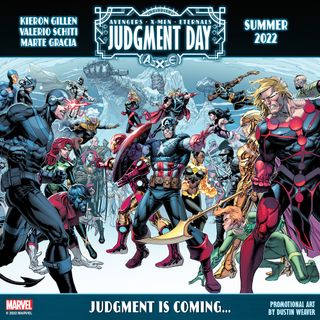
What we mean is, seeing heroes fight and settling those kinds of debates is fun for superhero fans (we here at Newsarama included). And more so, it offers new and interesting ways to simultaneously develop the personalities and challenges of multiple leading characters in lasting ways that villains who will disappear once they're defeated simply can't.
After all, Captain America and Iron Man still have to deal with each other on the Avengers, and still have to reckon with being allies years after they had a fight so serious that it led to Cap's death and resurrection.
AXE: Judgment Day, the latest iteration of Marvel's ongoing tradition of having its heroes come to blows, will have an official prelude story in May's Avengers/X-Men Free Comic Book Day 2022 release, from Kieron Gillen and Dustin Weaver, creators of the core Judgment Day limited series.
We'll likely learn more about the specifics of the fight then - but one thing's already for certain. When it comes to Marvel Comics, superhero conflicts like AXE: Judgment Day have been part-and-parcel since the first inklings of what would become the Marvel Universe.
Hero vs. hero conflicts have been at the heart of some of the most impactful Marvel events ever.
I've been Newsarama's resident Marvel Comics expert and general comic book historian since 2011. I've also been the on-site reporter at most major comic conventions such as Comic-Con International: San Diego, New York Comic Con, and C2E2. Outside of comic journalism, I am the artist of many weird pictures, and the guitarist of many heavy riffs. (They/Them)
Most Popular





